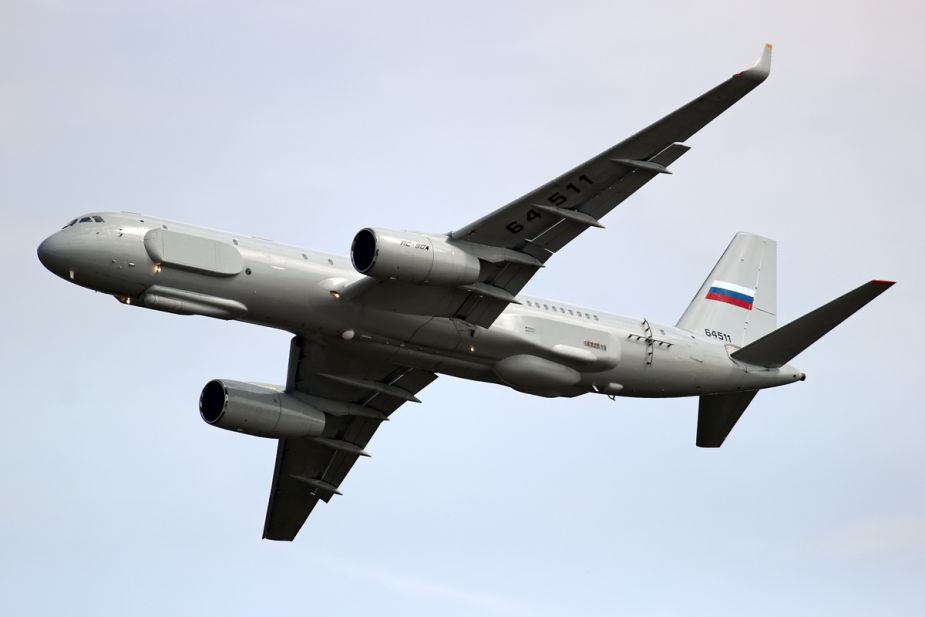Tu-204 passenger plane converted in antisubmarine aircraft for Russian Navy
The Russian Navy prepared technical requirements for the latest antisubmarine plane on the basis of Tu-204 passenger aircraft. It will be armed with the latest arms and equipment. The aircraft will ensure the actions of Russian warships in green waters, the Izvestia daily writes.
 Tupolev Tu-204 at Paris AirSshow in June 1991. (Picture source Wikipedia DoD photo by JO1 PETE HATZAKOS)
Tupolev Tu-204 at Paris AirSshow in June 1991. (Picture source Wikipedia DoD photo by JO1 PETE HATZAKOS)
Sources in the Defense Ministry said a technical assignment was prepared for the new antisubmarine airborne complex (PlAK). Tu-204 passenger aircraft or its Tu-214 option are the main candidates. The already available aircraft will be transformed into combat planes.
The sources said, besides Tupolev aircraft, PlAK will include new robotized submarine hunters and antisubmarine arms. Besides ordinary acoustic buoys and onboard search equipment, the aircraft will carry droppable unmanned boats. PlAK will destroy detected submarines with its own onboard arms.
Tu-204 is fit for antisubmarine defense, former Navy Chief-of-Staff Admiral Valentin Selivanov said. "In peacetime, they have to keep adversary submarines away from our coast. In case of threats, they have to detect deployment areas of hostile warships to destroy them right after an order arrives. Nuclear submarines are a major adversary which can inflict big damage. Therefore, it is necessary to pay major attention to defense against them," he said.
Detection and destruction capabilities determine the effectiveness of an antisubmarine aircraft. Homing torpedoes have to become the main weapon. One torpedo is enough to destroy a submarine, the admiral said.

Special-mission versions of the Tu-214 commercial transport aircraft to perform electronic warfare missions. (Picture source Rimma Sadykova)
The new aircraft with turbojet engines can patrol assigned areas at major altitudes for hours and remotely control sea drones. High cruising speed allows it quickly reaching any point of the search. Mobile robotics will increase the detection of submarines.
"The Navy has been facing the necessity to renew the fleet of antisubmarine aircraft since mid-1990s," expert Dmitry Boltenkov said. The Russian naval aviation operates three types of aircraft to destroy adversary submarines. Il-38 built in 1960s control the brown waters. Media said 15 aircraft remain operational and eight were upgraded to Il-38N level with improved devices. The number of operational Be-12 amphibious antisubmarine aircraft is even less.
The Defense Ministry planned to upgrade all long-range Tu-142. There are a couple of dozens operational. The small strength of the antisubmarine air fleet limits the capabilities of the Russian Navy to track foreign submarines and warships.
"It is costly to design a specialized aircraft from scratch. Some civilian aircraft meet the basic requirements for antisubmarine planes," Boltenkov said. Other countries followed suit. Thus, the United States developed passenger Boeing into the Poseidon antisubmarine aircraft.
Tu-204/214 are close in characteristics to Boeing 737-800 which was developed into Poseidon P-8. The Tupolev aircraft made non-stop flights from Moscow to Vladivostok. They can patrol for a long time and offer comfortable conditions for the crew and operators of antisubmarine weapons. "It is important that the aircraft are available. It remains to install the necessary equipment. They will reinforce the fleet of naval aviation," Boltenkov said.
The online register of Russian aircraft said there are at least 30 Tu-204/214 passenger modifications at present, the Izvestia said.


























